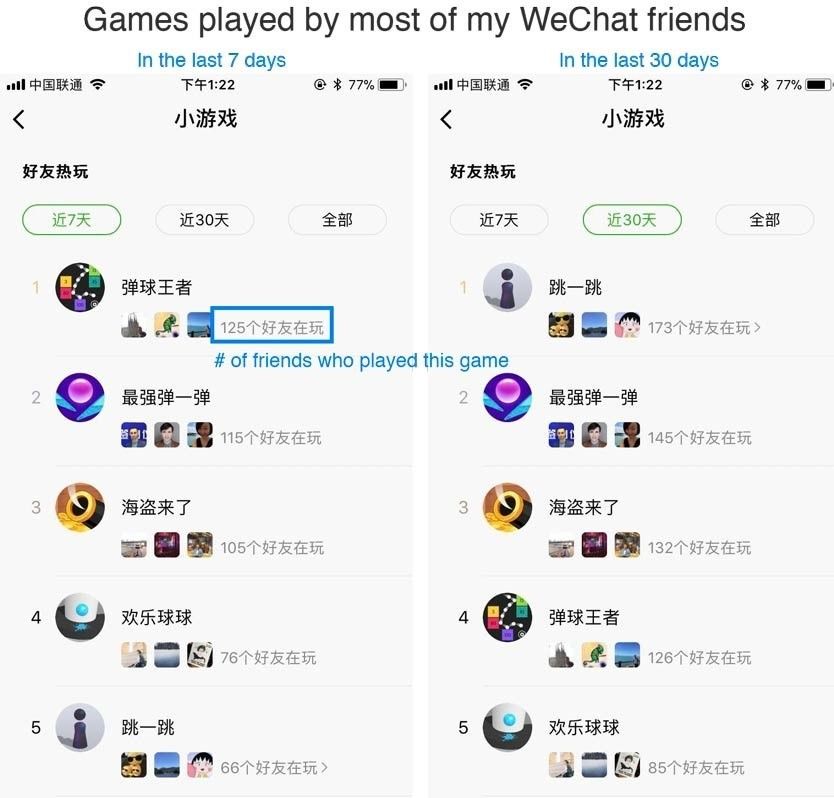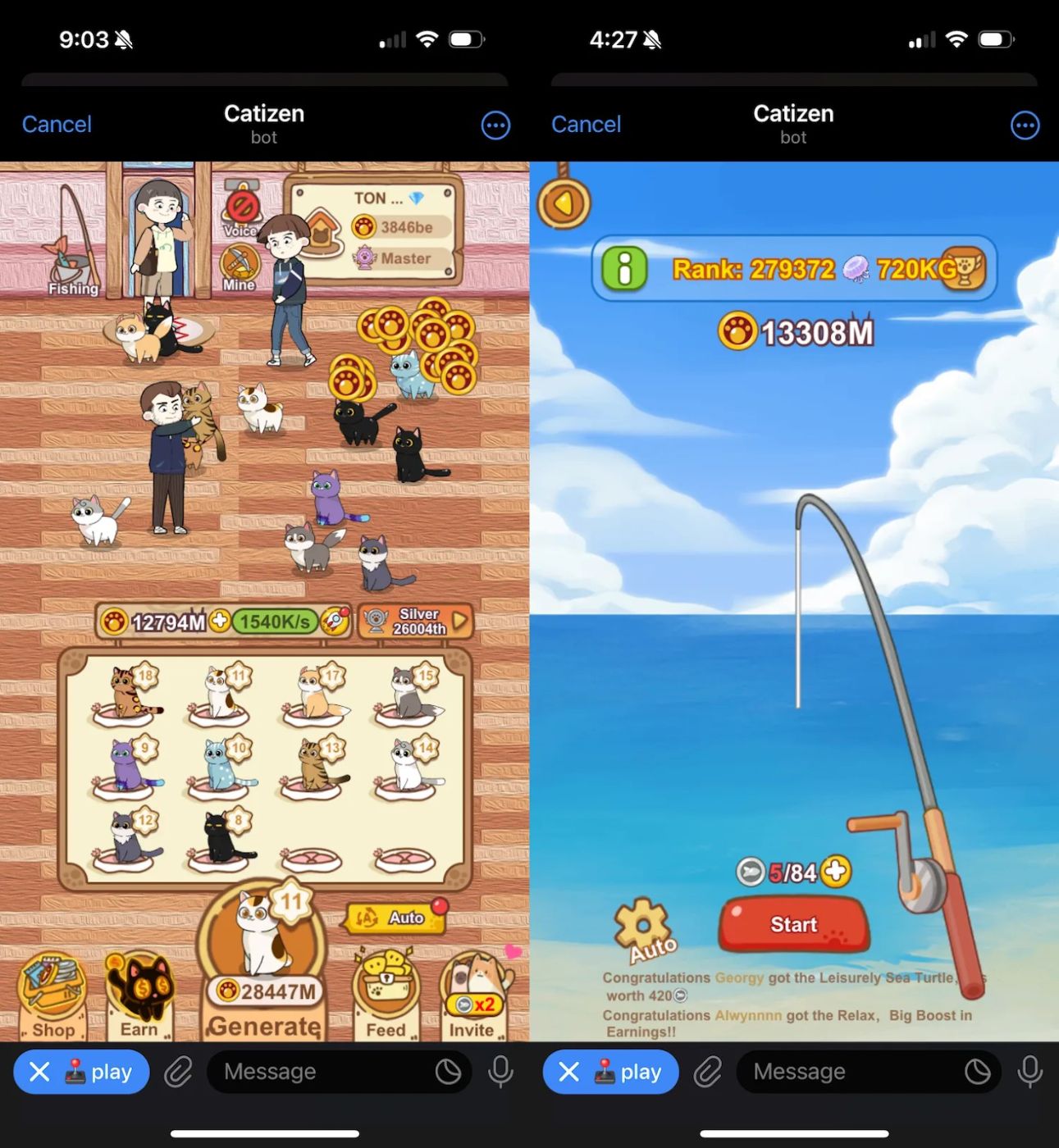and the distribution of digital products.
The New Era of In-Messenger Games: How Asia’s Innovations and Web3 Technology are Shaping the Future
In-messenger games, a digital era phenomenon born in Asia and rapidly adopted across the globe, have fundamentally reshaped social interactions and digital economies since their emergence in the early 2010s. These games, integrated into popular instant messaging platforms like WeChat, Kakao, and Telegram, have evolved from simple entertainment to complex ecosystems involving blockchain technology and digital assets.
\ The question now is: Which player will reshape the landscape with decentralized technologies and take the lead in this evolving space? Drawing from my experience at TonTon Games.
\
Asian In-Messenger Games: WeChat vs. KakaoWeChat, developed by Tencent, has positioned itself as a leader in integrating mini-games within its messaging platform since 2017. This initiative has proven highly successful, with WeChat’s mini-games attracting over 400 million monthly active users and generating approximately $2.3 billion in revenue in the first half of 2024 alone.
\ Popular titles include "Jump Jump," known for its simplicity and addictiveness, and "The Pirate Game," a strategy-based offering. Meanwhile, "Xundao Daquian" has shown firm performance, leading Interactive Entertainment rankings with 162.41 million monthly active users in February 2024.
\

\ WeChat's success can be attributed to the seamless integration of these games, their accessibility, and high user retention rates. The platform's mini-games have become integral to daily user engagement, demonstrating the massive potential of in-messenger gaming.
\ KakaoTalk, founded by Kakao Corp in 2010, dominates the South Korean market with a 93% market penetration. Leveraging this extensive user base, Kakao Games has implemented in-messenger gaming features. Their strategy revolves around utilizing KakaoTalk's social network to enhance player connectivity, driving user engagement and retention.
\

\ Kakao Games has taken a strategic approach to its growth, forming partnerships with global developers like Ocean Drive Studio, Chrono Studio, Candy Digital, and METABORA. This collaborative strategy has diversified its gaming portfolio, focusing on high-quality, narrative-driven experiences. Key offerings like "Guardian Tales" and "Eversoul" testify to the platform's commitment to quality and innovation, instilling confidence in its future.
\
Innovative Approach to In-Messenger Games: Telegram's Web3 StrategyIn the Western market, Telegram has emerged as a frontrunner in integrating blockchain technology within its messaging platform, positioning itself at the forefront of the Web3 movement. As of 2024, Telegram boasts a substantial global user base of 950 million active users, largely driven by the growing popularity of games, creating a significant market for its Web3 initiatives.
\ Telegram's strategy leverages The Open Network (TON) to facilitate secure and rapid transactions within the app, supporting in-game economies and decentralized applications (dApps). This aligns with industry projections from DappRadar, which anticipate the blockchain gaming market to reach a valuation of $39.7 billion by 2025, indicating substantial growth potential and exciting opportunities in this sector.
\ However, as Daniil Shcherbakov, CEO of TonTon Games, cautions, merely porting over successful Web2 games won’t resonate with today’s Web3 audience on Telegram. Shcherbakov explains,
\
“It’s not enough to take a Web2 game, even a successful Web2 game, and put it on Telegram and expect money to grow on trees. There is no audience currently for that. It should have a proper, well-developed Web3 narrative. Without it, people won’t play it, at least the people that are playing now.”
\
\

\ \ This focus on Web3-native gaming mechanics is evident in Telegram's gaming portfolio, which includes titles designed to leverage blockchain integration. For instance, Notcoin is a tap-to-earn game where users can accumulate Notcoin (NOT) through simple gameplay mechanics, while SnakeTON is a survival game that rewards players with cryptocurrency as they navigate obstacles.
\ Similarly, Catizen is a strategic, community-based game allowing players to earn and trade digital assets, offering an experience that appeals to Web3-minded users looking for both entertainment and economic participation.
\n

\ By addressing these demands, Telegram is building an ecosystem that supports not only traditional gaming enjoyment but also deeper engagement with GameFi (Game Finance) elements.
\
Asian Super Apps vs. Telegram: Key DifferencesCultural background undoubtedly shapes game design, impacting every step in the process — from narrative themes to character development. Game developers often draw inspiration from their cultural heritage, enriching gameplay and fostering a deeper connection between players through storytelling.
\ Telegram games focus more on individualism, freedom, and open-world exploration, while Asian games often emphasize community, structured progression, and deep storytelling. This approach reflects players' cultural values and preferences in each region, vividly illustrated through game mechanics, aesthetics, and engagement strategies.
\ The adoption of blockchain and Web3 technologies further highlights the divergence between these approaches. WeChat faced significant hurdles in this area due to strict government oversight of blockchain and cryptocurrency activities in China. Kakao, despite joining the Bank of Korea's digital currency project through its subsidiary Ground X, was positioned more as a follower than a leader in blockchain innovation.
\ Telegram's approach differs markedly from that of its Eastern counterparts. The platform enhanced user engagement by integrating blockchain technology via TON, implementing features such as collectible gifts and NFTs, and opening new monetization channels. This proactive approach positioned it as a pioneer in the Web3 space within messaging platforms, yet it also poses some challenges.
\
Potential Challenges for Telegram's Web3 EcosystemAchieving mass adoption of Web3 technologies, including decentralized applications (dApps) on Telegram, will be critical for the long-term success of its ecosystem. However, widespread adoption demands significant efforts in user education and onboarding, as blockchain technology remains unfamiliar to many users. Ensuring clear, accessible information alongside user-friendly interfaces is essential for driving engagement and building a broader user base within the Web3 environment.
\ Integrating Web3 features within a messaging platform also presents challenges related to interoperability with TON. Maintaining scalability, performance, and security will be essential to support high transaction volumes without compromising user experience. Additionally, Telegram must navigate regulatory compliance carefully, as evolving legal landscapes across jurisdictions could impact the development and deployment of Web3 features.
\
Final Thoughts: The Future of In-Messenger Games and Web3 IntegrationBlockchain technology will likely reshape the gaming industry in several exciting ways. Virtual worlds and economies will become more interconnected, allowing players to own and trade in-game assets across different games truly. This will create new revenue streams for both developers and players.
\

\ As in-messenger gaming continues to evolve, a few key technologies are paving the way for broader adoption across global audiences. HTML5 and Cocos are emerging as essential tools that can support mass-market growth and enhance game quality, accessibility, and lightweight functionality — crucial elements for games hosted within messaging platforms. These technologies provide the flexibility and performance needed to deliver responsive, visually rich experiences while keeping the file size low and eliminating the need for complex installations, making them ideal for today’s mobile-first world.
\ The social dynamics within these games are shifting, too. Where early in-messenger games were primarily focused on single-player or light social elements, modern games within platforms like WeChat, Kakao, and Telegram are deeply interactive, with live chat channels and in-game communities allowing hundreds of thousands of players to engage, give real-time feedback, and build a sense of camaraderie. This is a departure from the one-way ratings and reviews seen on app stores, adding another dimension to user experience and engagement.
\ Finally, the integration of blockchain technology on platforms like Telegram brings a new level of innovation through GameFi elements. In-game assets are becoming valuable digital items, tradable and secure through NFTs, while in-game staking and blockchain-based payments offer users new ways to invest, earn, and participate in the ecosystem. This trend echoes a global shift toward decentralized ownership and economies, signaling a new era of in-messenger gaming where players can interact with, own, and trade game assets freely.
- Home
- About Us
- Write For Us / Submit Content
- Advertising And Affiliates
- Feeds And Syndication
- Contact Us
- Login
- Privacy
All Rights Reserved. Copyright , Central Coast Communications, Inc.